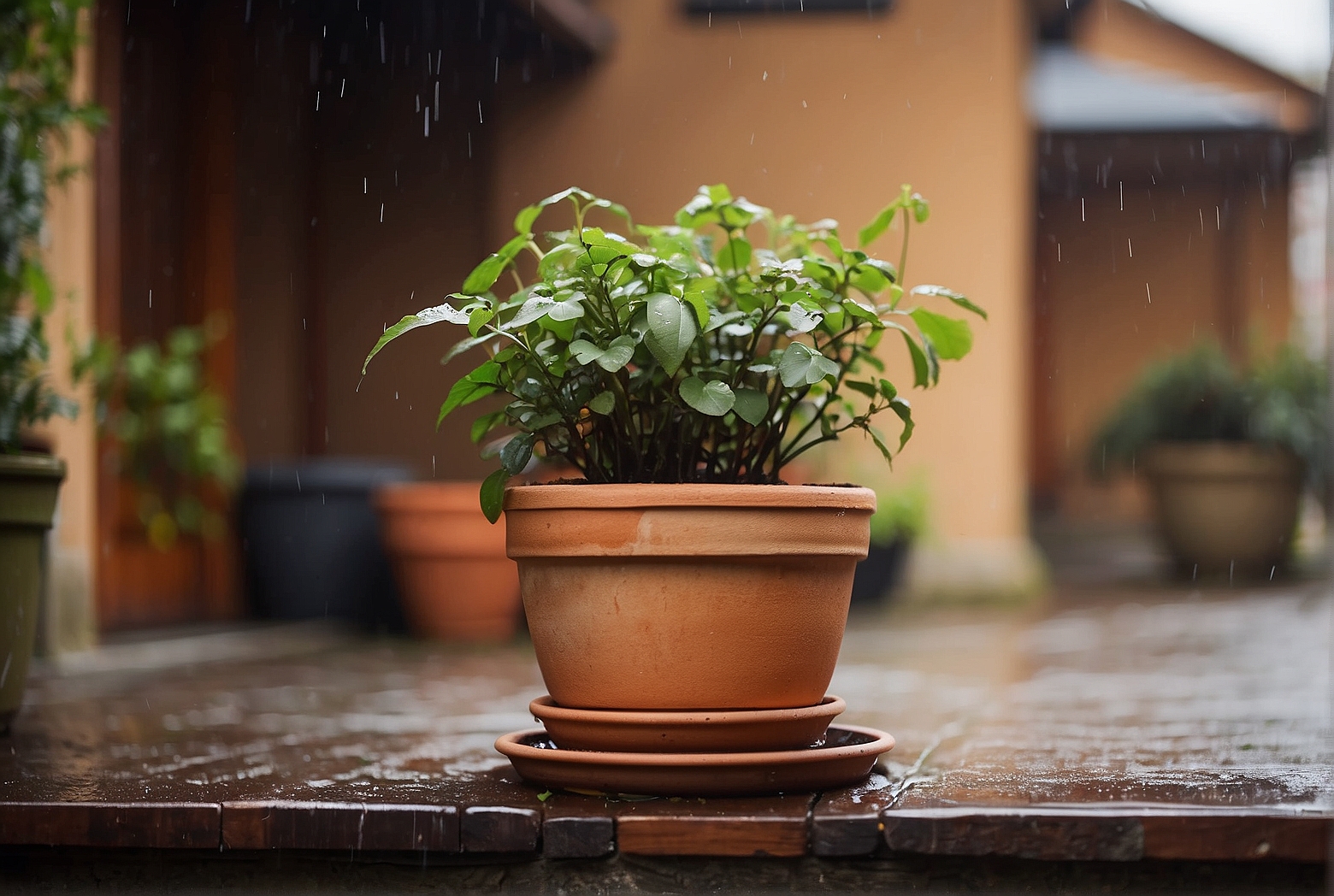If you’re a plant lover, you may be wondering if it’s okay to leave your potted plants out in the rain. After all, plants need water to survive, and rain is a natural source of water. However, there are a few things to consider before leaving your plants out in the rain. In this article, we’ll discuss the pros and cons of leaving your potted plants out in the rain, as well as some tips for keeping your plants healthy and happy.
Pros and Cons of Leaving Your Potted Plants in the Rain
Pros
1. Rainwater is naturally soft and free of chemicals, making it ideal for potted plants. Rainwater is also rich in nitrogen, which helps to promote healthy plant growth.
2. Rainwater helps to flush away any salt buildup in the soil, which can be harmful to plants.
3. Rainwater helps to keep the soil moist, which is essential for healthy plant growth.
4. Rainwater helps to reduce the need for frequent watering, which can be time-consuming and costly.
Cons
1. Too much rain can cause the soil to become waterlogged, which can lead to root rot and other plant diseases.
2. Rainwater can wash away essential nutrients from the soil, leading to nutrient deficiencies in the plants.
3. Heavy rain can cause the soil to become compacted, which can lead to poor drainage and root damage.
4. Rainwater can also wash away beneficial microorganisms from the soil, which can lead to a decrease in soil fertility.
How to Protect Your Potted Plants from the Rain
Rain can be beneficial for potted plants, but too much can cause damage. To protect your potted plants from the rain, there are several steps you can take.
First, make sure your potted plants are in a sheltered area. If possible, place them in a covered porch or patio, or under an awning or overhang. If you don’t have a covered area, you can use a tarp or plastic sheeting to create a makeshift shelter.
Second, consider using a pot with a drainage hole. This will allow excess water to drain away from the plant’s roots, preventing them from becoming waterlogged. If your pot does not have a drainage hole, you can drill one yourself.
Third, use a potting mix that is designed for drainage. This will help ensure that the soil does not become waterlogged and that the plant’s roots are not damaged.
Finally, if your potted plants are in an area that is exposed to heavy rain, you may want to consider using a rain barrel or other water collection system. This will allow you to collect and store rainwater for use in your garden.
By following these steps, you can protect your potted plants from the rain and ensure that they remain healthy and vibrant.
What to Do if You Forget to Bring Your Potted Plants Inside During a Rainstorm
If you forget to bring your potted plants inside during a rainstorm, there are a few steps you can take to help minimize the damage.
First, move the plants indoors as soon as possible. If the rain has already stopped, you can take the plants outside and gently shake off any excess water. If the rain is still falling, you can use a towel or cloth to carefully dry off the leaves and stems.
Second, check the soil for signs of waterlogging. If the soil is saturated, you may need to repot the plants in fresh soil. This will help to prevent root rot and other issues caused by too much water.
Third, inspect the plants for signs of damage. If the leaves are wilting or discolored, you may need to trim them back. This will help to encourage new growth and prevent further damage.
Finally, make sure to monitor the plants for any signs of disease or pests. If you notice any issues, you should take steps to address them as soon as possible.
By following these steps, you can help to ensure that your potted plants survive a rainstorm.

Q&A
1. Is it safe to leave my potted plants in the rain?
It is generally safe to leave your potted plants in the rain, as long as the plants are not in direct sunlight and the pot has adequate drainage. However, if the rain is heavy or prolonged, it is best to bring the plants indoors to avoid waterlogging and root rot.
2. How often should I water my potted plants?
The frequency of watering your potted plants will depend on the type of plant, the size of the pot, and the climate. Generally, most potted plants should be watered when the top inch of soil is dry.
3. What should I do if my potted plants get too much rain?
If your potted plants get too much rain, it is important to ensure that the pot has adequate drainage. If the pot does not have adequate drainage, you should move the plant to a sheltered area or bring it indoors. Additionally, you should check the soil for waterlogging and root rot and take appropriate action if necessary.
Conclusion
In conclusion, it is generally safe to leave your potted plants in the rain, as long as the plants are not sensitive to too much water. However, it is important to consider the type of plant, the amount of rain, and the temperature before leaving your plants out in the rain. If you are unsure, it is best to err on the side of caution and bring your plants indoors.

